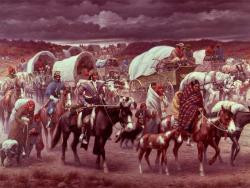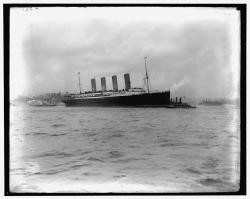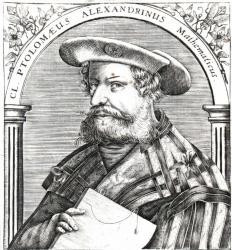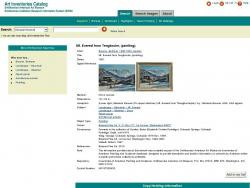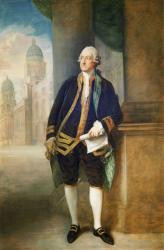Linda Muller
Smithsonian Learning Lab Coordinator
Smithsonian Institution, Heinz History Center
Primary (5 to 8 years old), Elementary (9 to 12 years old), Middle School (13 to 15 years old), Adults, Post-Secondary
Language Arts And English, Science, Social Studies, Arts, Other
Hello, I am one of the Smithsonian Learning Lab Program Coordinators based in Pittsburgh, PA. My professional interests are focused on instructional technology and computer-based learning. I am also fascinated by history as it's presented in primary and secondary resources.
Linda Muller's collections
Women's Suffrage
The Woman's Suffrage movement in America began in 1848 at the Seneca Falls Convention in an effort to allow women the right to vote.
 Linda Muller
Linda Muller
20
War of Currents
Would alternating current (AC) or direct current (DC) become the dominant power?
This Collection includes images and texts that depict the "War of Currents" that occurred between Thomas Alva Edison and George Westinghouse.
 Linda Muller
Linda Muller
14
Visual Thinking Strategies
The goal of teaching visual thinking strategies is to encourage students to observe independently and back up their responses with evidence.
Annotations for each image contain key questions to help students practice visual thinking.
 Linda Muller
Linda Muller
5
The Renaissance of Science
How can new discoveries lead to change? This Collection features images of men whose discoveries changed human knowledge and understanding of the world in which they lived.
 Linda Muller
Linda Muller
6
Theodore Roosevelt - "Bully for you!"
A collection of resources on America's 26th President, Theodore Roosevelt.
 Linda Muller
Linda Muller
11
The Middle East
A collection of resources depicting the countries that make up the Middle East.
 Linda Muller
Linda Muller
26
Spanish-American War
The Spanish-American War was a conflict between the United States and Spain that ended Spanish colonial rule in the Americas and resulted in U.S. acquisitions of territories in the Pacific and Latin America.
The war originated with the Cuban struggle for independence from Spain in 1895. Demand for U.S. intervention increased after the unexplained sinking of the U.S.S. Maine on February 16, 1898 in Havana Harbour.
The U.S. declared war on Spain in April, 1898 and attacked Spain's interests in the Pacific and Cuba. Realizing that she was outclassed by American military power, Spain surrendered from Cuba in July, 1898 - effectively ending the war. Later that year, in December, 1898, Spain signed the Treaty of Paris in which they renounced their claims to Cuba, Puerto Rico, and Guam and transferred sovereignty over the Philippines to the U.S. for $20 million.
Source citation: "Spanish-American War." History.com. A&E Networks. 2016. Web. 6 Jan 2016
 Linda Muller
Linda Muller
17
Space Exploration: The Early Years
A collection of resources depicting space exploration from 1957 to 1969.
 Linda Muller
Linda Muller
35
Slavery to Freedom
This collection contains a variety of resources that can be used by teachers and students to understand the origins of slavery and slavery in America.
 Linda Muller
Linda Muller
23
Roman Architecture: Arches and Columns
Roman architecture continued the legacy left by the Greeks. However, the Romans were great innovators and quickly adopted new construction techniques, used new materials, and uniquely combined existing techniques with creative design to create some of the worlds most amazing architectural structures.
Many Roman innovations were created in response to the practical changing needs of Roman society and were designed and built across the Roman world guaranteeing their permanence so that many of these great edifices still exist today.
Source citation: Cartwright, Mark. "Roman Architecture." Ancient History Encyclopedia. 2013. Web. 4 Jan. 2016.
 Linda Muller
Linda Muller
21
Prohibition
Did the 18th Amendment effectively keep America dry during the 1920s-1930s? What about Prohibition locally in Pittsburgh - was it effective?
This collection of resources includes images, artifacts, texts, newspaper articles, and videos that are assembled to depict a macro-view of how the Prohibition Era started in America. This collection also parallels a local, micro-view examination of Prohibition here in Pittsburgh including a brief history of political corruption, bootlegging, and murder spanning a five year period from 1927 - 1932.
 Linda Muller
Linda Muller
16
Pop Culture 1950 - 1999
What is pop culture? Which resources in this Collection do you think best defines pop culture for each decade? Which resources represent controversial issues? Which resources are timeless? Which resources do you think have a modern-day counterpart?
Challenge: use Pintrest to create a board of images that represent today's pop culture.
 Linda Muller
Linda Muller
28

